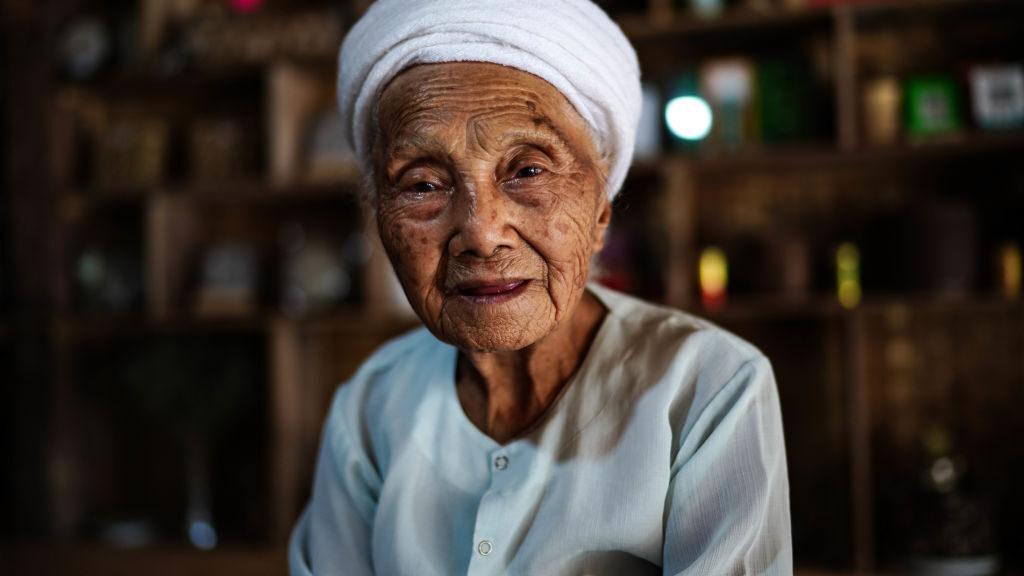Wang Haidong, director of the Department of Aging and Health at China’s National Health Commission, on Tuesday announced demographic studies that showed China will become a “severely aging society” by 2035, with 30 percent of its vast population over 60 years old.
China’s state-run Global Times quoted Wang saying the communist regime is under “great pressure to cope with the aging scenario,” because the “old-age dependency ratio” is about to skyrocket, hitting its peak around 2050.
In other words, as with many other industrialized countries – but on a titanic scale, and faster – China is reaching the point where longer lifespans and collapsing birth rates with leave it without enough young workers to bear the cost of caring for retirees.
Wang took pains to assure reporters that China has adequate resources to handle its elderly for the time being, although he made it sound like his government was not so much caring for them as warehousing them:
Speaking about the development in care of the elderly, Wang said as of 2021, pension system covered 1.03 billion and the health insurance covered 1.36 billion of the 1.4 total population. Long-term care services are pioneered in 49 cities, covering 145 million people.
There have been 8 million beds in 360,000 care centers as of first quarter of 2022, and more than 1.75 million beds in medical-care centers nationwide.
More than 40,000 learning centers are established for the elderly to study while cultural facilities and tourist sites are open to them for free or at discounted prices to encourage the elderly to participate in recreational activities, Wang said.
Wang said the regime “will be implementing national strategies for the situation and figure out a unique path to cope with it,” but so far none of its remedies have worked to stem China’s demographic collapse.
Alarm bells began sounding several years ago, as Chinese health experts began projecting net population decline by 2025, and a few postulated negative population growth might have already arrived in some regions.
In July of this year, leading demographer Huang Wenzheng said negative growth “will be the dominant trend for a long time,” describing it as “an inevitable result of a long period of low fertility rate.”
Huang noted previous dire predictions of demographic decline may have actually underestimated how rapidly new births would decline. China posted the lowest birth rate in its modern history last year, possibly because the coronavirus pandemic and its lockdowns made it harder than ever for people to date, and the terrified population lost its remaining enthusiasm for having children.
China first loosened up its infamous “One Child Policy” of mandatory contraception and abortions, then began actively encouraging citizens to have two children, then realized the tough arithmetic of population growth means even larger families will be needed.

This photo taken on September 17, 2020 shows Chen Jifang, 68, working out at a gym in Shanghai. The grandmother from Shanghai has become a minor celebrity in recent months in China as her newfound and unlikely love for working out made national headlines. (STR/AFP via Getty Images)
Chinese officials labored to dispel the sense developed by young professionals, in China and many other societies around the world, that having children is too expensive and frustrates the career ambitions of young parents. One of China’s techniques along these lines was to impose strict controls on the price of private tutoring, which upwardly-mobile parents saw as an expensive necessity if their children were to succeed.
China pumped out propaganda to encourage having multiple children and offered prospective parents a slew of incentives, from tax benefits and housing credits to subsidies for child care and insurance. None of this seems to be working as well as demographers hoped.
China will still have plenty of people in 2035 or 2050, and while the declining ratio of young workers to elderly people is burdensome, it should not be catastrophic for a country as prosperous as China claims to be.

This 90-year-old woman is the inheritor of traditional Dai embroidery on 15th July, 2020 in Jiangcheng, Yunnan, China. (Photo by TPG/Getty)
The big problem is that China’s dreams of economic global dominance are thoroughly dependent upon having a vast supply of workers, and it looks like they will not be showing up for work in the necessary numbers two or three decades from now.
Human capital is simply indispensable for sustaining the explosive growth China’s 21st Century agenda requires, especially when abundant cheap labor is such a major component of Beijing’s export strategies. China’s military ambitions demand both soldiers and industrial workers to produce high-tech munitions.
As Foreign Policy noted in July, if current projections for both counties hold up, China will reach the end of this century with roughly half the population of India. Meanwhile, the U.S. is struggling with its own demographic decline, but it is far less severe than China’s at present, and the vastly higher per capita income of Americans means China’s dream of becoming the world’s top economy will probably only endure for a few years, if it happens at all.

COMMENTS
Please let us know if you're having issues with commenting.